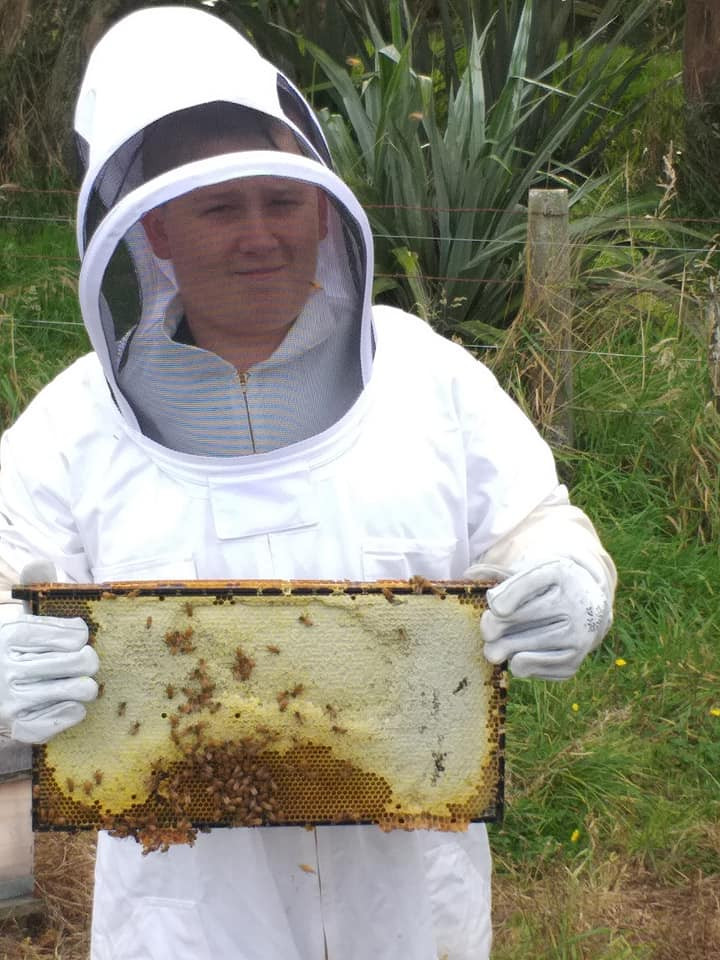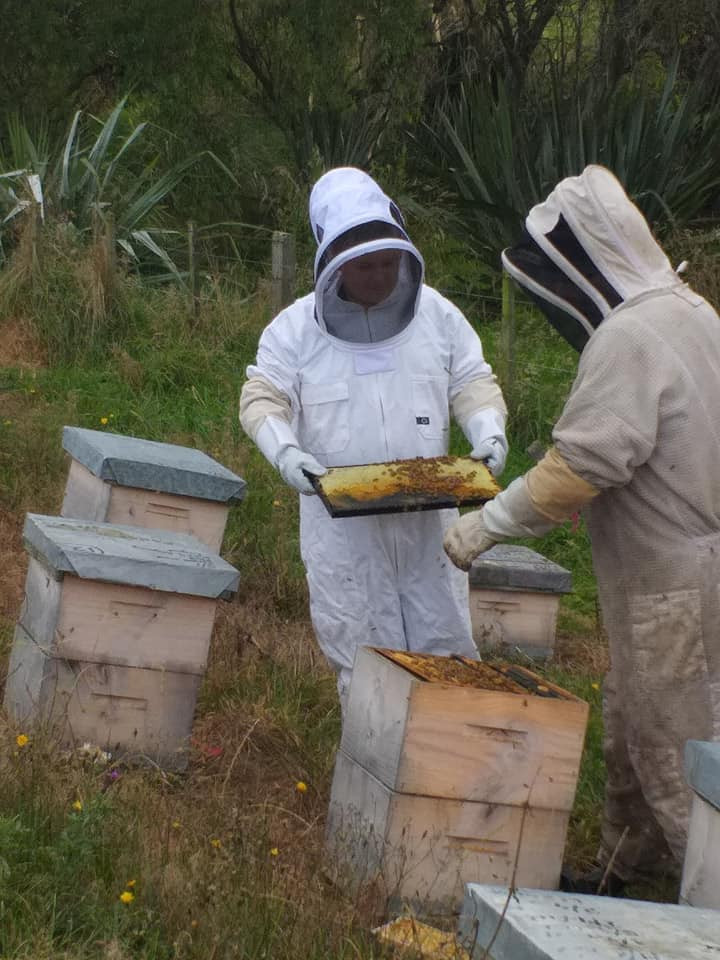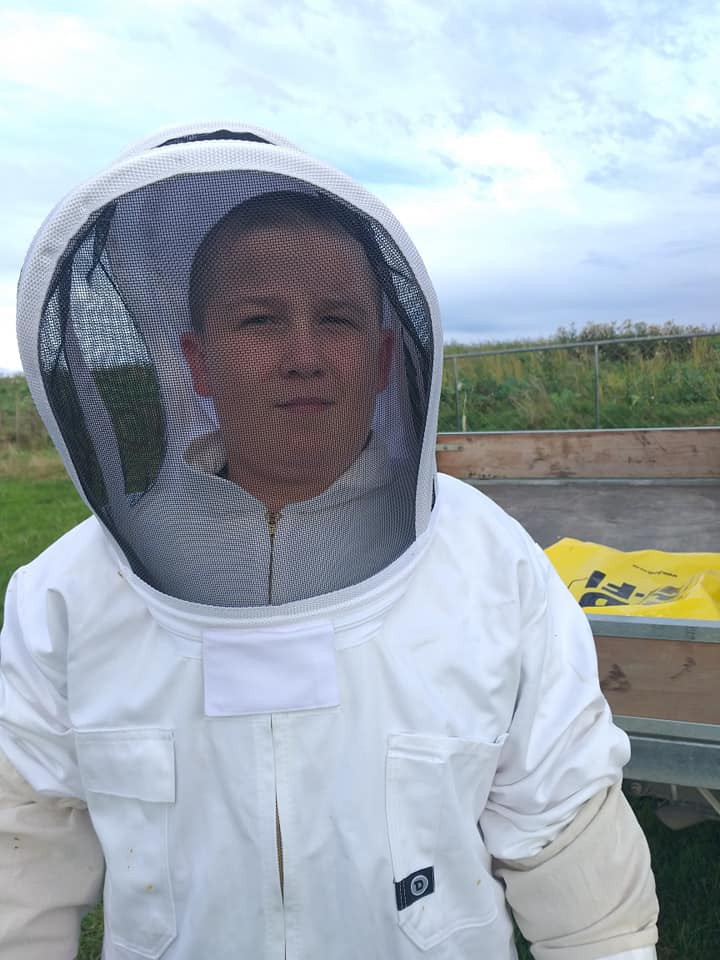Korban and the bees

Korban has been learning all about beekeeping during the Lockdown period. Read what he has to say about it...
Beekeeping
The other day I decided I wanted to go and have a look at the beehives we have on our farm and see what it's like inside one of the hives.
I started off by grabbing the bee suit out of the boot room and put it on. Then dad and I drove over to the hives where the main beekeeper Thomas was. I was a bit scared at first as I usually hate bees but in the bee suit, I felt very safe and protected from the bees.
We used a special tool to open up the hives and I could hear all the bees buzzing around me and they were going crazy. The next job was to check the productivity of the bees. We could check this by looking at how much liquid in the hives had turned solid, the solid hives were the ones with the honey in them. The ones with the empty combs were the lesser productive hives and you would write that down to try and determine what is wrong with that hive.

The next step we did was feed the bees with sugar water. To feed them there are two slides which are the same size as two of the honeycomb slides. In the feed slide, there are two holes which lead to tanks which only bees are small enough to drink out of. The reason why most hives have these is in case it is a rainy day the bees will still produce honey by eating the sugar water to continue to produce honey while they aren't able to collect nectar. We also added something called a pollen patty which looks like a meat patty but it is just pure pollen in a brick.
We add this so the bees can produce more honey without having to leave the hive.
The last step we did was add these strips called Varroa strips. The reason we added them in is that it protects the bees from the Varroa Mite which is one of the main pests in a
Beehive. what the Varroa Mite does is it attaches itself to the bee’s body and starts to eat the bee, and as you would expect this severely weakens bees pollen collection so we try our hardest to stop the Varroa Mites living in our hives.
Hope you enjoyed this small story
By Korban


